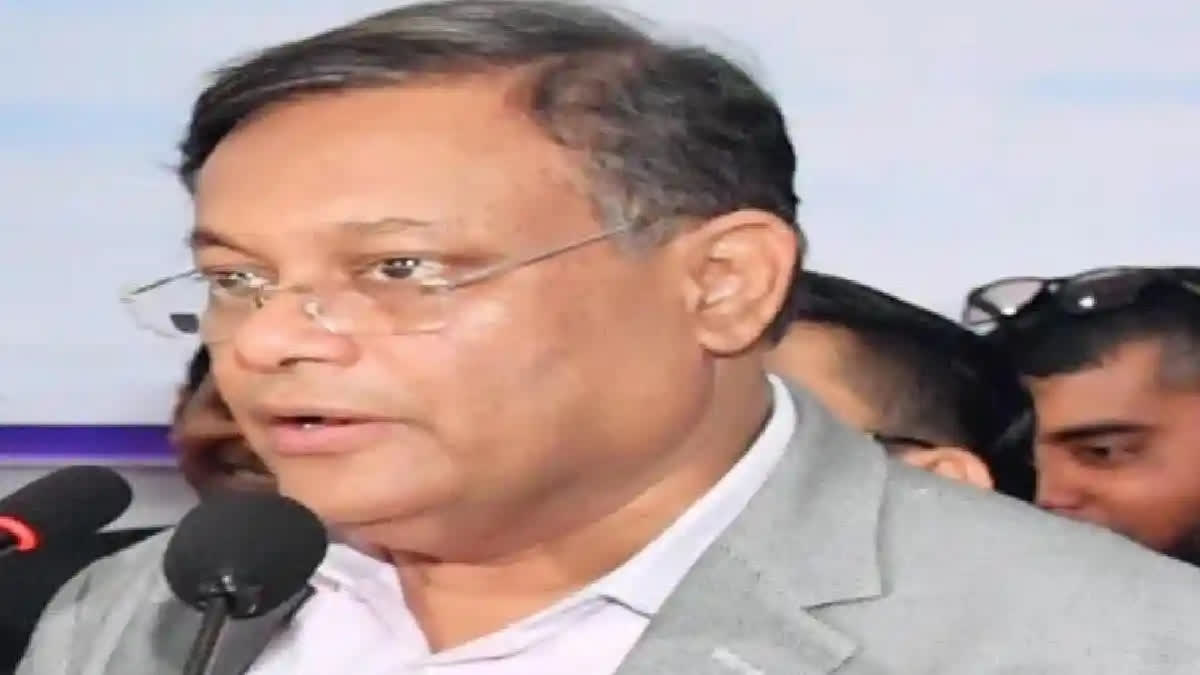New Delhi: Cooperation among BIMSTEC nations, regional connectivity, the conflict in Myanmar, the Rohingya refugee crisis, China’s growing influence in the region and security in the Indo-Pacific are likely to be on the agenda during discussions when new Bangladesh Foreign Minister Hasan Mahmud comes to India on his first bilateral visit after assuming office.
“At the invitation of External Affairs Minister S Jaishankar, Foreign Minister of Bangladesh Hasan Mahmud will visit India from February 7 to 9,” the External Affairs Ministry said in a statement. “This will be his first bilateral visit abroad as Foreign Minister after swearing in of the new Government in Bangladesh. The visit reflects the high importance and priority both countries attach to their bilateral relationship.”
According to the statement, Jaishankar and Mahmud will review the progress in wide-ranging areas of bilateral relations and chart out the agenda for future engagement. “They will also exchange views on sub-regional, regional and multilateral issues of common interest,” the statement read.
An issue of sub-regional interest is cooperation among the member countries of the Bay of Bengal Initiative for Multi-Sectoral Technical and Economic Cooperation (BIMSTEC). The BIMSTEC, which came into existence in 1997, comprises seven countries lying in the littoral and adjacent areas of the Bay of Bengal--Bangladesh, Bhutan, India, Myanmar, Nepal, Sri Lanka and Thailand--membership in the bloc allows India to engage more with the extended neighbourhood in Southeast Asia under New Delhi's Neighbourhood First Policy via northeastern India. This will also help keep in check China’s growing influence in the region through Chinese President Xi Jinping's pet Belt and Road Initiative (BRI) project.
“A key part of the BIMSTEC cooperation is to improve regional connectivity between Bangladesh and India’s northeastern region besides Bhutan and Nepal under the BBIN initiative,” K Yhome, Senior Fellow at the Shillong-based Asian Confluence think tank, told ETV Bharat. “These sub-regional groupings are important for India’s development cooperation with Bangladesh.”
Both India and Bangladesh are parties to the Bangladesh-Bhutan-India-Nepal (BBIN) Motor Vehicle Agreement. The Agreement was conceived after the South Asian Association for Regional Cooperation (SAARC) failed to agree on a regional motor vehicles agreement at a summit in Nepal in 2014, mainly because of opposition from Pakistan. India, Bangladesh and Bhutan have signed the agreement. Bhutan, though, has temporarily opted out pending parliamentary approval.
Operationalising the MVA by concluding the passenger and the cargo protocol will help realise the full potential of trade and people-to-people connectivity between the BBIN countries by fostering greater sub-regional cooperation. The Asian Development Bank has supported the project as part of its South Asian Subregional Economic Cooperation Programme and has been requested to prioritise about 30 road projects worth billions of dollars. Connectivity, they say, is the key to development. Connectivity also is the key to regional security.
Meanwhile, with India helping Bhutan to develop the Gelephu Smart City, the Himalayan kingdom can also get access to the Bay of Bengal via India’s northeastern region and Bangladesh. An important element in terms of connectivity is boosting power transmission among the countries. According to media reports, Nepal has proposed the tariff to be charged on power to be exported to Bangladesh as the two sides inched closer to a deal for the first-ever trading of electricity. The two countries have already agreed in principle for the export of 40 MW of electricity from Nepal to Bangladesh. Since Indian territory lies between Nepal and Bangladesh, both sides must take India on board in the energy trade.
